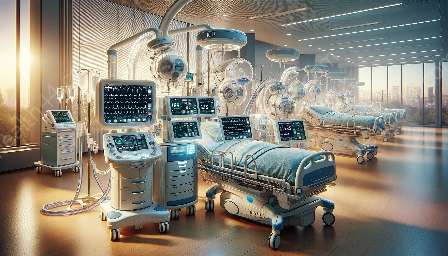As we delve into the world of life support systems and medical devices & equipment, one innovation that shines brightly is the BiPAP machine. Here, we'll explore the significance of BiPAP machines, their role in life support systems, and their impact on medical devices & equipment. We'll understand their functionality, uses, and benefits in various healthcare settings.
Understanding BiPAP Machines
BiPAP, which stands for Bilevel Positive Airway Pressure, is a non-invasive form of therapy used to treat individuals with respiratory disorders. It differs from CPAP (Continuous Positive Airway Pressure) by delivering two distinct pressures – a higher pressure during inhalation and a lower pressure during exhalation. This makes BiPAP machines particularly effective for patients who may have trouble exhaling against a higher continuous pressure.
Integration with Life Support Systems
BiPAP machines play a crucial role in life support systems, especially for patients with respiratory conditions. These machines can be seamlessly integrated into intensive care units (ICUs), emergency rooms, and even home care settings to provide non-invasive respiratory support. They offer a more comfortable breathing experience for patients who require assistance, reducing the need for invasive ventilation methods in certain cases.
Impact on Medical Devices & Equipment
The development and utilization of BiPAP machines have significantly influenced the landscape of medical devices & equipment. They have revolutionized the approach to respiratory therapy, providing a versatile and effective alternative to traditional ventilation methods. These machines have also spurred advancements in technology, leading to more sophisticated and user-friendly designs that cater to diverse patient needs.
Functionality and Uses
The functionality of BiPAP machines revolves around delivering variable airway pressures to support breathing. They are commonly used in the treatment of sleep apnea, chronic obstructive pulmonary disease (COPD), congestive heart failure, and other respiratory conditions. Furthermore, BiPAP machines can be utilized for weaning patients off invasive mechanical ventilation, providing a smoother transition towards independent breathing.
Benefits in Healthcare Settings
BiPAP machines offer a multitude of benefits in various healthcare settings. They enhance patient comfort, improve respiratory function, and reduce the risk of complications associated with invasive ventilation. Their non-invasive nature contributes to a better overall patient experience and facilitates continuity of care, particularly for individuals requiring prolonged respiratory support.
Conclusion
BiPAP machines have emerged as indispensable tools within life support systems and medical devices & equipment. Their ability to provide personalized respiratory support, coupled with their impact on improving patient outcomes, underscores their significance in modern healthcare. As innovation and research continue to drive advancements in this field, BiPAP machines will undoubtedly remain at the forefront of non-invasive respiratory therapy, cementing their place as vital components of life support systems and medical devices & equipment.


